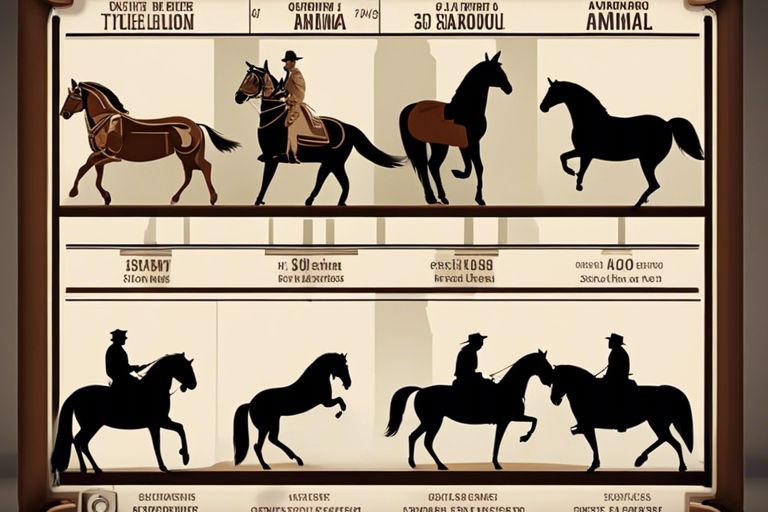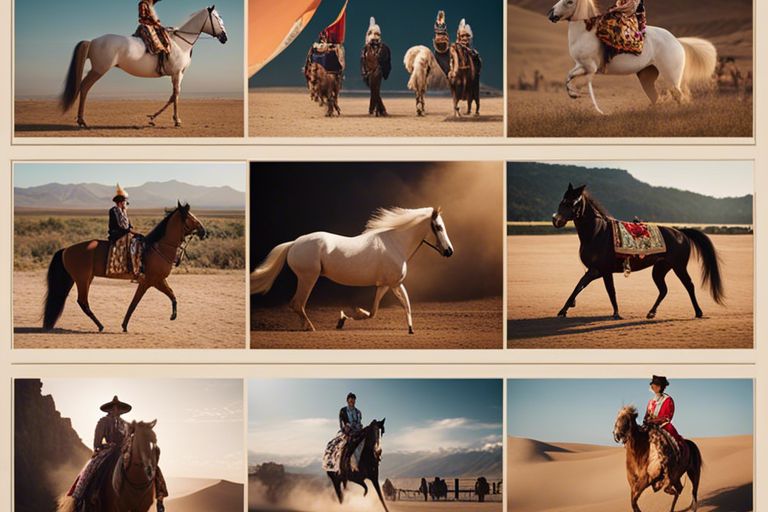Just imagine immersing yourself in the captivating world of horse art that spans centuries. From ancient cave paintings to Renaissance masterpieces, horses have inspired artists across cultures and time periods. Join us on a journey to discover the beauty and significance of these majestic creatures portrayed through the eyes of artists throughout history. Let’s explore into the evolution of horse art and uncover the timeless allure these noble animals hold in artistic expression.
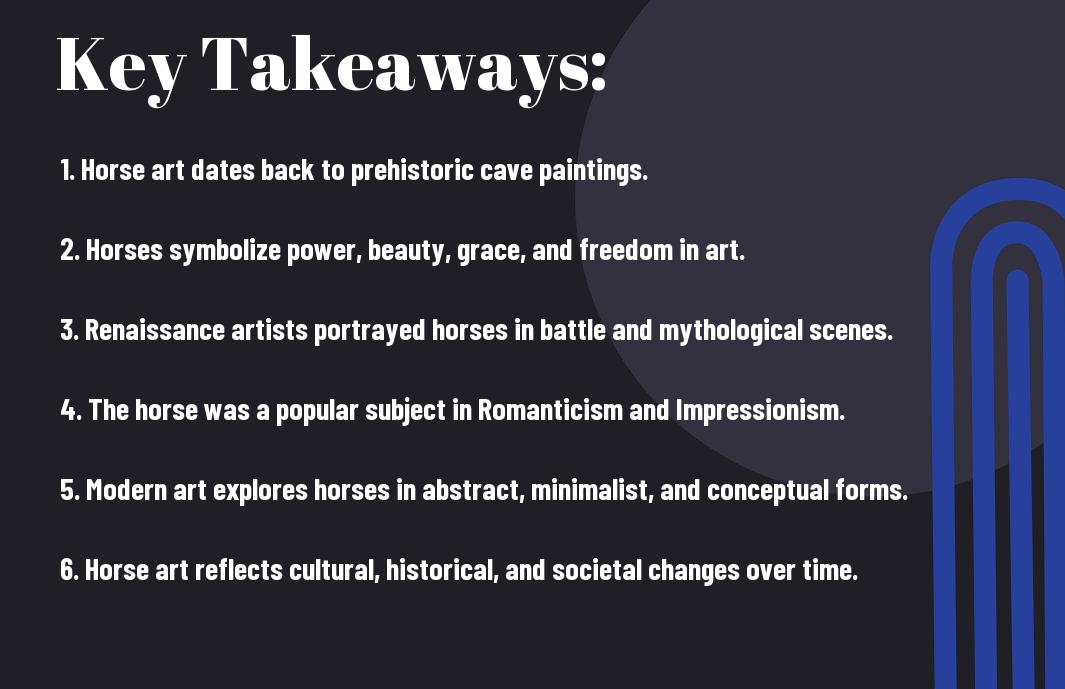
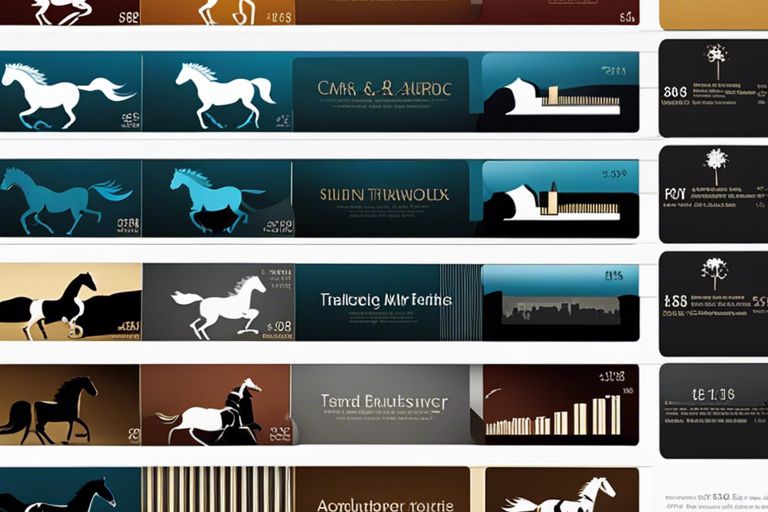
Ancient Civilizations
Egyptian Horse Art
Egyptian horse art dates back thousands of years, showcasing the significance of horses in ancient Egyptian society. **Depicted in various paintings and carvings, horses were revered for their role in both everyday life and religious ceremonies.** These artworks often depicted horses pulling chariots for pharaohs or serving as symbols of strength and power.
Greek and Roman Equine Depictions
Ancient Greek and Roman art also celebrated the beauty and strength of horses through **sculptures, pottery, and mosaics**. **Horses were often depicted in battle scenes, showcasing their importance in warfare and as symbols of prestige and nobility.** These artworks not only highlighted the physical attributes of horses but also symbolized various virtues such as courage, loyalty, and victory.
It is fascinating to see how horses were integrated into the art of these ancient civilizations, reflecting their central role in both practical and symbolic aspects of society. The intricate details and expressions captured in these artworks offer a glimpse into the deep admiration and respect that ancient cultures had for these majestic animals.
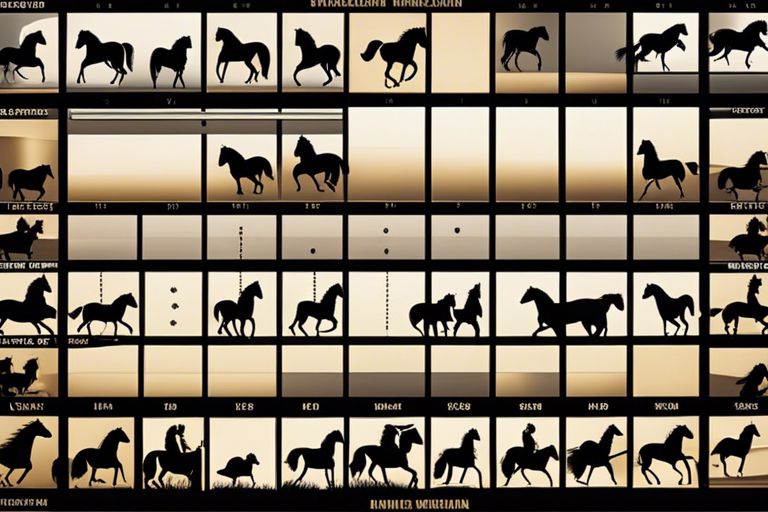
Medieval and Renaissance Periods
Even in the Medieval and Renaissance periods, horses held a significant presence in art, reflecting their importance in society.
Illuminated Manuscripts and Horse Illustrations
The medieval period saw the creation of illuminated manuscripts, where intricate illustrations of horses were depicted. These manuscripts not only showcased the skill of the artists but also served as a way to document and preserve knowledge about horse anatomy and breeds.
Equestrian Portraits in Renaissance Art
The Renaissance period marked a turning point in art, with equestrian portraits becoming popular among nobility. Artists such as Leonardo da Vinci and Peter Paul Rubens created stunning portraits of horses and their riders, capturing the power and grace of these majestic animals on canvas.
Understanding the significance of horses in Renaissance art can give you a deeper appreciation for the intricate details and symbolism imbued in these works. Horses were often used as symbols of power, wealth, and grace, reflecting the values and aspirations of the Renaissance elite.
The Golden Age of Equine Art
Many consider the 17th and 18th centuries to be the Golden Age of Equine Art. During this period, there was a significant rise in horse breeding, which led to the creation of majestic and refined horse breeds that were admired and celebrated in art. The demand for paintings and sculptures depicting these prized horses soared, leading to a flourishing of equine artistry across Europe.
The Rise of Horse Breeding and Artistic Expression
The rise of horse breeding during the Golden Age not only transformed the equine world but also influenced artistic expression. The breeding of horses for specific traits such as speed, strength, and elegance inspired artists to capture the beauty and grace of these animals in their works. This era saw a fusion of science, horsemanship, and artistry, resulting in rich and detailed depictions of horses in various artistic mediums.
Famous Horse Artists of the 17th and 18th Centuries
To showcase the beauty and importance of horses in society, famous horse artists of the 17th and 18th centuries played a crucial role. Masters such as George Stubbs, Jacques-Laurent Agasse, and Johann Georg Hamilton dedicated their careers to capturing the essence of horses in their artwork. Their attention to detail and anatomical accuracy set the standard for equine art during this period, influencing future generations of artists.
Breeding and artistry became intertwined during the Golden Age, with artists depicting the magnificent horses that were the result of careful breeding practices. The intricate relationship between horse breeding and artistic expression reached its pinnacle during this period, leaving a lasting legacy in the world of equine art.
Romanticism and Realism
Once again, as you explore into the world of horse art throughout history, you will encounter the contrasting styles of Romanticism and Realism. These artistic movements, popular during the 18th and 19th centuries, brought forth new ways of portraying horses and capturing their essence.
The Emotional Connection Between Horses and Humans
An emotional connection between horses and humans became a central theme in Romantic horse art. Artists sought to depict the bond between man and horse, highlighting the trust, loyalty, and companionship shared between the two. Paintings during this period often evoke a sense of drama and emotion, portraying horses in settings that emphasize their strength and beauty.
Detailed Realism in Horse Art
On the other hand, Realism in horse art focused on capturing the precise details of horses with unparalleled accuracy. Artists paid close attention to anatomical correctness, musculature, and the play of light and shadow on the horse’s coat. Realist artists strived to create paintings that were almost lifelike, showcasing the true essence of these majestic creatures.
Realism in horse art was not just about replicating the physical appearance of horses; it was about immersing the viewer in the world of horses, allowing them to feel the power and grace of these animals through intricate brushwork and meticulous attention to detail.
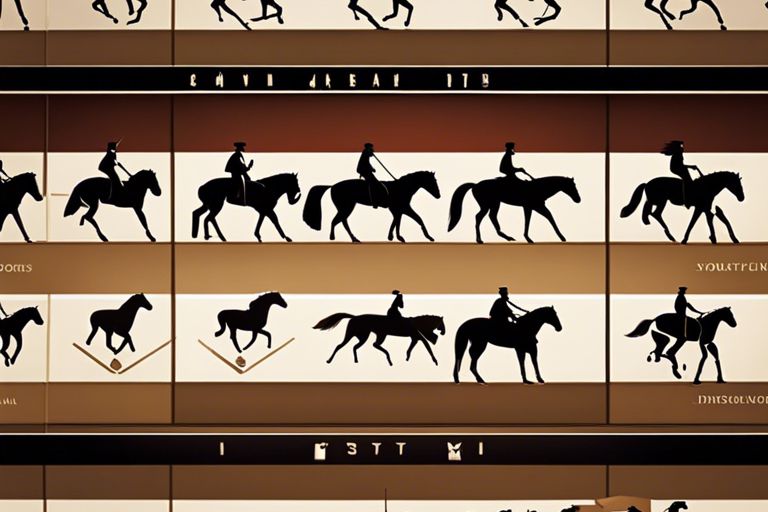
Modern and Contemporary Horse Art
Not only does horse art encompass traditional and classical styles, but it also extends to modern and contemporary approaches that offer fresh perspectives on this timeless subject.
Abstract and Expressionist Horse Art
The abstract and expressionist movements in horse art have pushed boundaries and challenged traditional representation. These styles focus on conveying emotion and energy, often using bold colors, dynamic brushstrokes, and unconventional compositions to capture the essence of the horse rather than its realistic appearance.
Digital Horse Art and Modern Techniques
Horse art has evolved with technological advancements, leading to the emergence of digital art and modern techniques. With the use of digital tools and software, artists can create stunningly realistic or imaginative horse imagery that transcends the limitations of traditional mediums.
It allows artists to experiment with new visual effects, textures, and compositions, opening up a world of possibilities for horse art enthusiasts. Whether creating digital paintings, 3D sculptures, or multimedia installations, the marriage of technology and artistry in horse art continues to push boundaries and captivate audiences.
Horse Art Across Cultures
To truly appreciate horse art, you must explore how different cultures have depicted these majestic creatures throughout history.
Asian Horse Art Traditions
Across various Asian cultures, horses have held significant symbolism and have been portrayed in art in unique ways. In China, for example, horses have symbolized success, loyalty, and power. Chinese artists often depicted horses in a stylized manner, emphasizing their grace and nobility. In Japan, horses have been associated with endurance and strength, and you can find intricate horse sculptures and paintings in traditional Japanese artworks.
African and Native American Horse Art
With African and Native American horse art, you will discover a deep spiritual connection between these cultures and horses. African art often features horses in rituals and ceremonies, symbolizing freedom and bravery. Similarly, Native American tribes have a long history of honoring horses as sacred beings, often incorporating them into their art to symbolize guidance and protection. The intricate beadwork and vibrant colors used in Native American horse art reflect the reverence these cultures hold for these animals.
Horse art from Africa and Native America is not just about aesthetics; it carries profound cultural and spiritual significance that resonates through the ages.
Conclusion
From above exploration of horse art through the ages, you have gained a deeper appreciation for the historical significance and cultural importance of depicting horses in various art forms. The evolution of artistic styles and techniques over time reflects the changing relationships between humans and horses, offering insights into our shared history and the enduring fascination with these majestic animals.
As you continue to explore the rich tapestry of horse art, remember to reflect on the diverse interpretations and expressions of artists across different time periods and cultures. Each piece offers a unique perspective on the bond between humans and horses, inviting you to immerse yourself in the beauty and symbolism that permeate these timeless works of art.
Q: What is horse art?
A: Horse art is artistic representations of horses, ranging from paintings and sculptures to drawings and tapestries.
Q: What is the significance of horse art through the ages?
A: Horse art has been a prominent subject in art history due to the symbolic representation of power, grace, and beauty associated with horses.
Q: How has horse art evolved over time?
A: Horse art has evolved from ancient cave paintings to modern abstract interpretations, reflecting changes in artistic styles and techniques.
Q: Who are some famous artists known for their horse artwork?
A: Some famous artists known for their horse artwork include George Stubbs, Rosa Bonheur, and Leonardo da Vinci.
Q: How can one explore horse art through the ages?
A: One can explore horse art through visiting museums, galleries, and exhibitions dedicated to equine art, as well as studying art history books and online resources.
